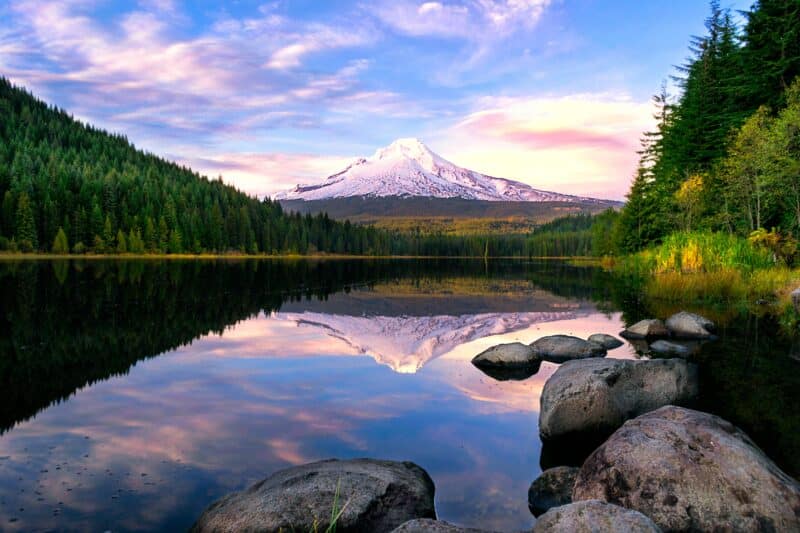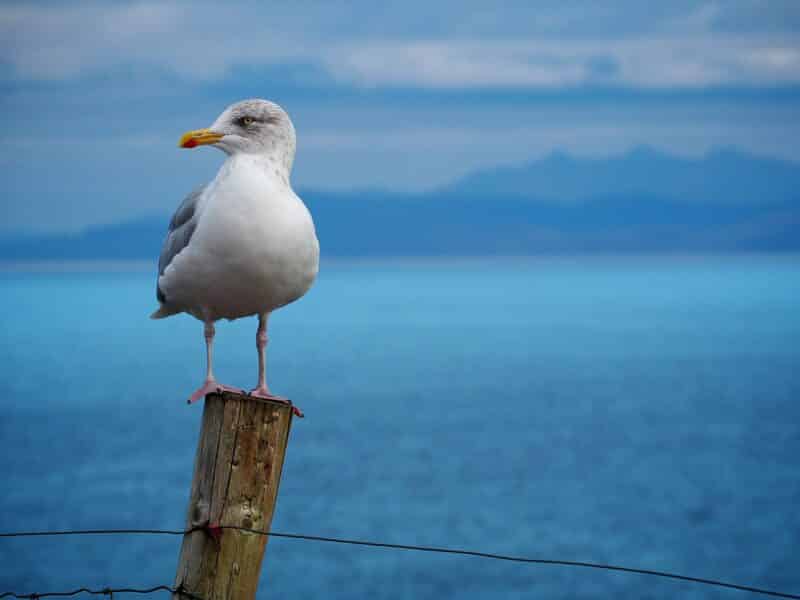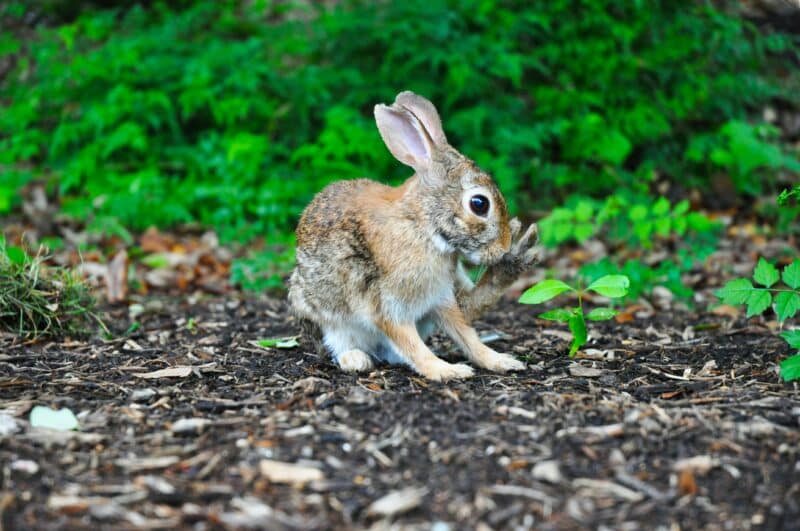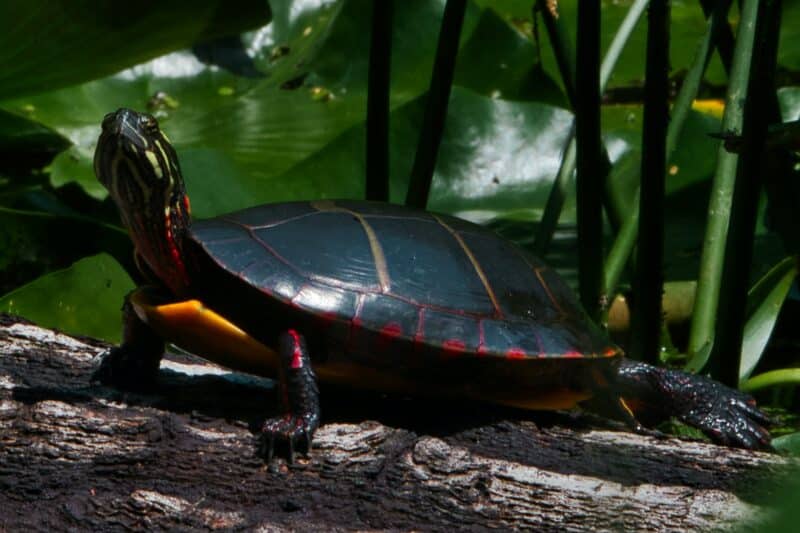Welcome to Animals and Wildlife in Oregon.
Oregon is one of the regions in the United States filled with lakes, mountains, and dense forests.

Here, we can find a wide variety of wildlife. There are around 140 species of mammals found in this region, including about four species of animals only found here, and not anywhere else.
Click below to jump to a section on the animals in Oregon:
Blue Belly Lizard

The western fence reptile is among the most well-known reptiles in the US west. They are often seen washing in the daylight around outside trails, structures, and homes. The shimmering blue sizes of the male reptile are a particular marker of this species, and these scales serve a significant job in the conceptive cycle.
This article will cover a few intriguing realities about the ID, environment, and diet of the blue paunch reptile in the wild and how to focus on them as pets. This reptile can be distinguished by the tan or dark-hued scales with wavy stripes on the back and dazzling blue scales around the sides and lower part of the mid-region. The grown-up male has this dazzling blue tinge, and the female and adolescents will often have the more blunt dark scales recently.
One of the significant recognizable proof markers for the whole variety is the presence of sharp, spiked scales; consequently why the class is known as the barbed reptiles. Most individuals from this species measure somewhere close to 4.3 inches and 8.3 inches long from the tip of the head to the furthest limit of the tail. They have long, sharp hooks that empower them to climb trees without problem. While they look remarkably like the eastern fence reptile, their reach doesn’t cover by any stretch of the imagination, which ought to simplify distinguishing properly.
Like any remaining reptile, the day-to-day conduct of the blue paunch reptile is arranged around the encompassing open-air temperature of the general climate. Since they can’t deliver enough of their body hotness to make due, the blue paunch reptiles need to invest quite a bit of their energy engrossing daylight. They should be visible in the sunshine hours sunning on rocks, complex ways, logs, and fence posts; they often favor high places. However, any area will work for them.
Where to find Blue Bellied Lizards in Oregon:
They are found in the eastern region of Oregon along the Great Basin area. They are majorly found in rocky habitats.
Seagull

These birds are one of the most relentless and sharp foragers in the world; these birds prefer to live close to the coastal areas. As per the report, there are around 50 species found in the world. There are two significant breeds of seagulls: the European herring gull and one American gull, and major breeds are found worldwide. These birds are known as one of the most intelligent birds in the world. They always remember their strategy for searching for food and pass these methods to the new generation of birds.
These birds can drink both salt water and fresh water like other animals. They have a particular gland in their eyes, and the salt water will flush from the nostrils. They have tiny claws on the lower legs, which help them create reasonable running speed and protect them from falling too.
Most are found near seaside living spaces everywhere, especially from the north side of the equator. In non-breading time they travel away from the inland region but prefer to live near the ocean habitats. Their body is often covered with white or grey feathers or can be black.
Their head color may vary based on the species. Some of the gulls have white color heads, and some of the species have black color heads. The color of head feathers becomes grey in the winter season. They are around 11-30 inches in length from head to tail.
Where to find Seagulls in Oregon:
They are mostly found near the coastal areas and the river of Columbia. Columbia River is one of the central spots to view seagull birds in the Oregon region hosting animals in Oregon.
Mountain Lion

They are found in north and south America, and are tan in color. They are also found in the western part of America and Florida. Otherwise known as puma, catamount, panther, and mountain lions in various habitats. They are found in mountain areas like Blue Mountain in the northeast of the Oregon region and Cascade mountain areas in the southwest.
Talking about their look, they seem big, have shot hairs, and seem like fluffy house cats. Their head is small in size, and their face is also shot, having small round ears. They have long necks and long tails, and their bodies are long and sleek. Their legs are strong, providing them a good speed for running over their prey. Furthermore, they have sharp teeth, which helps tease their food and chew the meat.
On average, this animal is around 3’3″ to 5’5″ long. But when we consider tails in their length, some male sizes will be about 9 feet, and females’ heights will be about 7 feet. They are about 2 feet to 2.6 feet long from shoulder to the ground when standing.
Female mountain lion weighs around 80 – 100 pounds when they are adults. On the other side, the male is about 125 -160 pounds. Color variety goes from a brownish variety to a pale blue dark. The nose and tail are black from the edges, while the belly, inner parts of the legs, and throat are light. Young babies are born with some spots on their bodies, which fade in around six months. When they are born, their eyes are blue, which ch, changes to yellow when they are about 16 months.
Where to find Mountain Lions in Oregon:
They are found in mountain areas like Blue Mountain in the northeast of the Oregon region and Cascade mountain areas in the southwest alongside other Oregon animals.
Brush Rabbit

These rabbits, or western brush hare, or Californian brush rabbit, are a type of cottontail hare found in western seaside districts of North America, from the Columbia Waterway in Oregon toward the southern tip of the Baja California Landmass. Its reach stretches out as far east as the eastern sides of the Sierra Nevada and Fountain mountain ranges. The brush hair is a little bunny with short legs and a short tail. It is dimly dark on the sides and back and pale dim on the midsection and the underside of the seat.
The hairs are primarily dark, albeit some have white tips. Grown-up hares measure 303 to 369 mm (11.9 to 14.5 inches) long and range in weight from 511 to 917 grams (18 to 32 ounces). These rabbits require thick thistle bunches or another thick brushy environment. These brier clusters frequently have broad organizations of trails and runways. The species will, sometimes, utilize tunnels made by different species, yet doesn’t dig its own. The home reach is tiny, under 2000 square meters. These rabbits generally live in chaparral vegetation, but are also found in oak and conifer environments.
In the San Francisco Narrows Region, the brush hare aggregates its exercises at the edge of the brush and displays substantially less utilization of lush regions. It utilizes the inside meeting of the wild, which might be a preferred climate over the chaparral one. Concentrates done on the brush bunny in Oregon further showed that it seldom left the brushy regions it possesses. A brush might be involved more in the drier seasons, while grasses are utilized in the wetter seasons, comparable to the development of yearly vegetation. Territory utilization is likely connected with the rearing season.
Where to find Brush Rabbits in Oregon:
They are found near the Columbia River of Oregon region, majorly in the south, with several animals in Oregon.
Western Painted Turtle

These turtles have color marks on their body, like on their head, neck, tails, and legs. We can find red, yellow, and olive color marks. Their body temperature may vary based on the environment, known as ectotherms. They spend most of their sleeping time near the pond at night and during the day, and are more active, which occurs in winter, spring, and summer.
Western painted turtles are very fond of heating their body before starting their day, so they take a very long time on dead logs, sand, or on rocks in basking before starting their day. They can bask in a group of 50 turtles at a place with the same species or sometimes with other turtles. During the winter season, they became significantly less active and gained more fat in their body. These turtles pore their body deep in the mud areas and stay there for the winter season to maintain their body temperature. They’ll emerge when spring starts.
These reptiles can eat any animals and plants they like the most; they are alive or dead. They want to eat aquatic plants and insects, like algae, and swim deep down in the ponds, searching for food with their web-like feet. They swallow their food by submerging their head. Western painted turtles, for the most part, breed in Spring and mid-June. Females can store sperm so that a few guys may treat a solitary grip of eggs. The female proposes her rear feet to dig her home in loamy or sandy soil in an open region of around 200 yards of water.
She might dig a few homes before she’s happy with one of them. She lays 1 to 23 eggs in it, and when she’s done, she hauls twigs and other garbage to cover the home, then packs down the dirt. The eggs hatch around ten weeks after the fact. Turtle hatchlings are tiny, about the size of a quarter. When they are out of their shells, they move up to the surface and set off to track down water.
They appear to know which heading to head down instinctually. Male western-painted turtles are more modest and complement the females. Guys grow to 6 inches long, and females grow to 10 inches long, presumably to help egg creation. Assuming it gets away from hunters, a Western-painted turtle can live to be around 20 years of age.
Where to find Western Painted Turtles in Oregon:
They are found in Cascade zoo in the Oregon region, and their favorite habitat is the pond.
Summary of Animals in Oregon
Oregon’s woodlands are home to a variety of untamed life. This intuitive aid depicts the assortment of timberland-staying creatures found in the state. Safeguarding forestland from improvement is an excellent method for limiting environmental misfortune for species that depend on woodlands.
Woodland landowners can likewise utilize timberland as the executive’s strategies to keep up with, improve, and even make natural surroundings for birds, warm-blooded creatures, and creatures of land and water while overseeing grounds for lumber creation. The region of Oregon in the US has mountains, deserts, and dense forest areas.
If you enjoyed reading the above, check out Animals in Nova Scotia and Animals in California next!
- Discover the Fascinating World of Long-Neck Dinosaurs - October 20, 2024
- Jurassic World Dominion Dinosaurs - October 20, 2024
- Top 4 Animals and Wildlife Invading The United States - October 20, 2024






